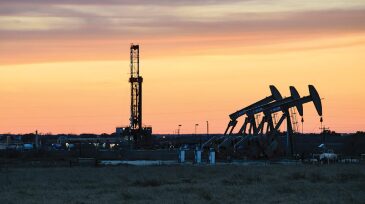Monthly Features
-
The US supermajor is using one of its lowest-value hydrocarbon products to generate double-digit production increases in its most prolific US asset.
-
This article is the fourth in a Q&A series from the SPE Research and Development Technical Section focusing on emerging energy technologies. In this piece, David Reid, the CTO and CMO for NOV, discusses the evolution and current state of automated drilling systems.
-
Casing deformation has emerged as a major challenge in China’s unconventional oil and gas fields, prompting the development of new solutions to address the issue.
-
Oil and gas experts encourage human/AI partnerships that can “supercharge” capabilities to create competitive advantages.
-
Bad vibes are being addressed by contractors as operators push to go faster, deeper, and longer with unconventional wells.
-
As LNG projects sanctioned earlier this decade come onstream, a shortage of new final and pre-final investment decisions threatens to leave the project pipelines dry at a time when global LNG demand is forecast to surge over the next 15 years.
-
Not all friction reducers are created equal. With dozens of varieties on the market, industry research suggests that oil and gas companies be choosy.
-
Equinor is working on a natural language processing tool that could combine data sources and help planners anticipate the issues that affect onsite operational safety.
-
Artificial intelligence tools present many opportunities for the energy industry, and, as technological concepts leave the realm of science fiction, companies have started to grasp what is possible. What roles do culture and ethics play in helping companies understand the digital revolution?
-
When Apache rolled out a digital system delivering real-time drilling data and advice, the reactions from workers were strong, and conflicting.
-
Occidental drillers and engineers figured out that it is faster and cheaper to reduce the weight on bit (WOB) than speeding ahead, which increased the risk of a breakdown and time lost for repairs.
-
Corva’s challenge is to change the behavior of drillers who work for somebody else. The fast-growing company has no shortage of users.
-
Colombia is walking a thin line between becoming another fading petroleum province and Latin America’s next big success story. Its aces in the hole: unleashing its nascent offshore and unconventional sectors.
-
If you can see it, then maybe you can control it. This sums up the latest quest that the unconventional engineering community embarked upon to get a better understanding of proper well spacing and how fractures really interact.
-
Drilling change requires training drillers. Leadership matters, as does motivation, engaging displays, and understanding office politics. Four different looks at the human side of drilling productivity improvement.
-
Recipients of SPE’s 2019 International Awards will be recognized on 1 October, during the SPE Annual Technical Conference and Exhibition in Calgary.
Explore Content by Discipline
Power Up With JPT Newsletters
JPT Newsletter (Weekly).
All the top stories, trends, and tech.
JPT Unconventional Insights (Monthly).
Fresh takes on shale and tight oil.
Get JPT articles in your LinkedIn feed and stay current with oil and gas news and technology.
















